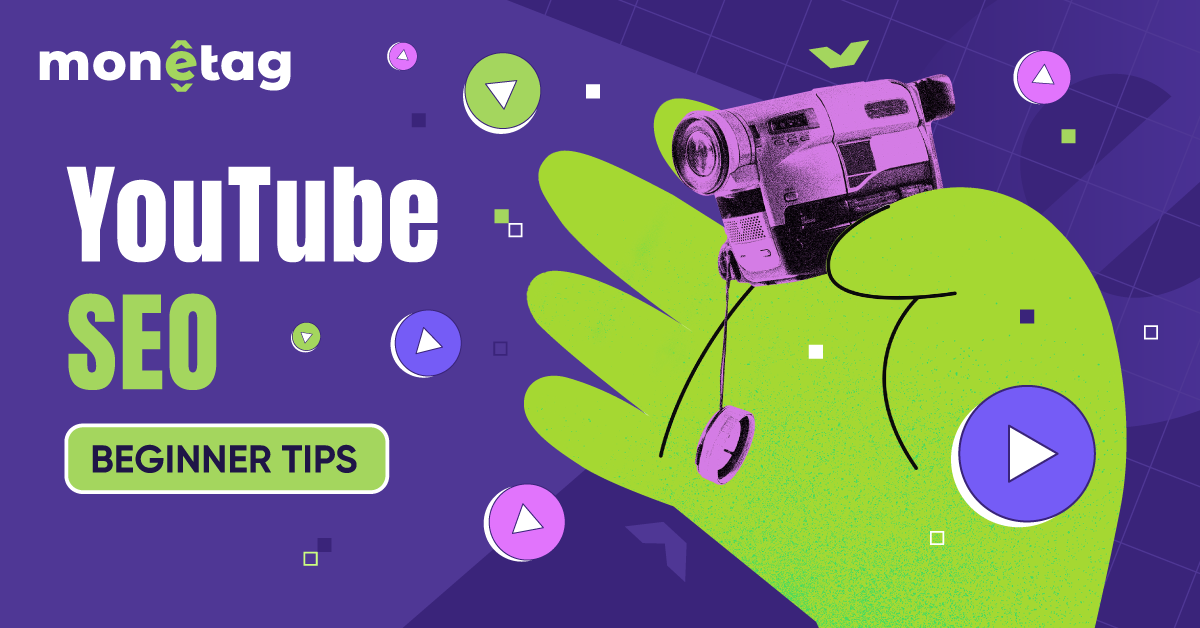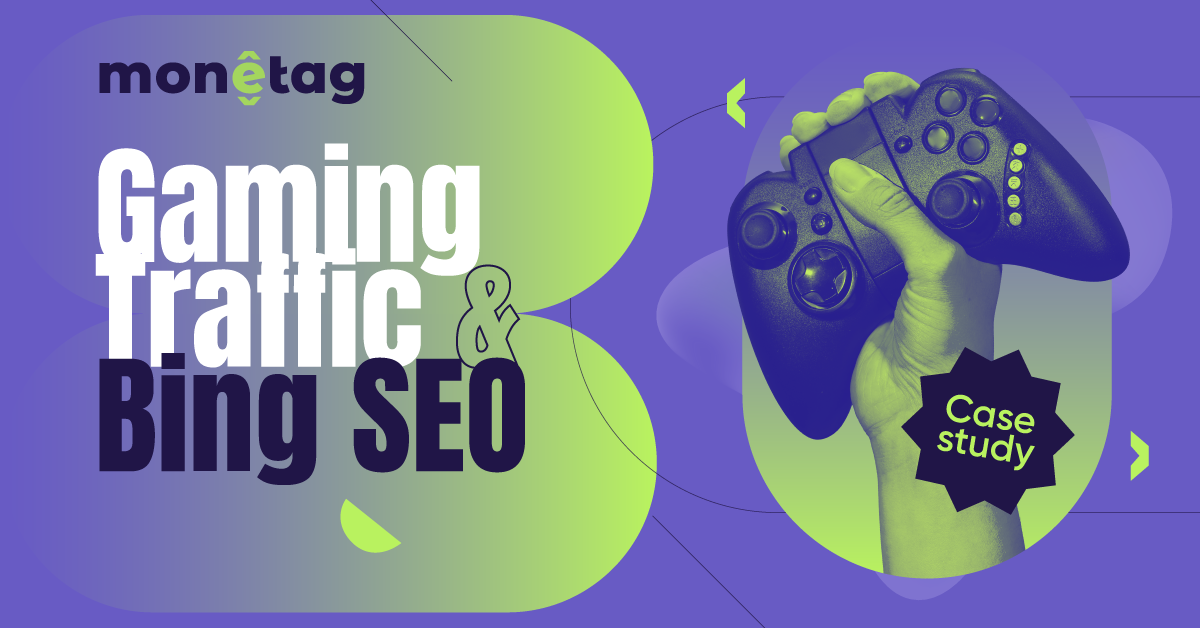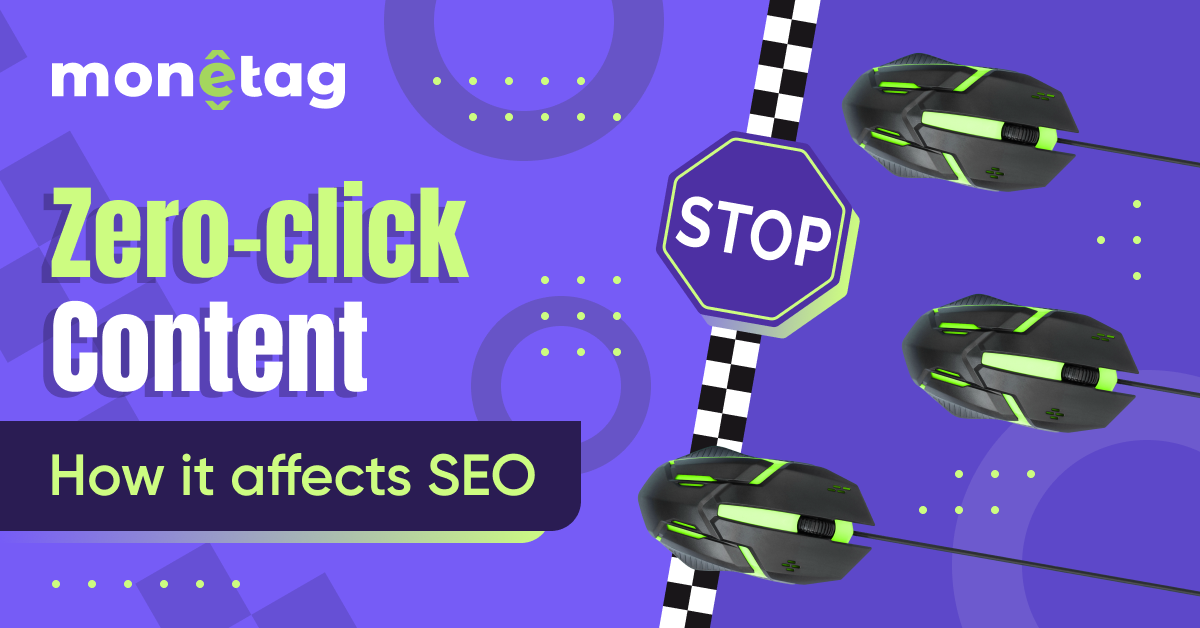| SEOs | Content Marketers | |
|---|---|---|
| Primary Focus | Data and metrics | Engagement, audience building, and topical authority |
| Goal | Dominating search engine rankings for specific topics | Increasing engagement and converting audiences into leads |
| Approach | Analyze opportunities using user behavior data from Google and other sources | Focus on creating captivating content assets to position the brand |
| Tools/Methods | Keyword research, SERP analysis, technical SEO, and publishing optimized pages | Content strategy, storytelling, and audience analysis |
2026 Guide to SEO Content Marketing

Everybody wants to rank highly on search engines, but it’s not as simple as posting a blog and watching the traffic roll in. SEO content marketing is at the core of most successful websites’ strategies, and doing it well is trickier than it seems.
You need to create content that both searchers and search engines want to see. Doing that takes time, research, and patience.
If this sounds interesting, keep reading to learn everything you need to know about SEO content marketing, why it matters, and how SEO and content marketing work together to turn good websites into great ones.
What is SEO?
SEO stands for Search Engine Optimization. It’s the process of improving your website to appear higher in search engine rankings, like Google or Bing.
For example, the top result for the “automate digital marketing” search on Google is a blog from the automation software tool, Zapier. This features as the top organic (unpaid) result, above sponsored results.
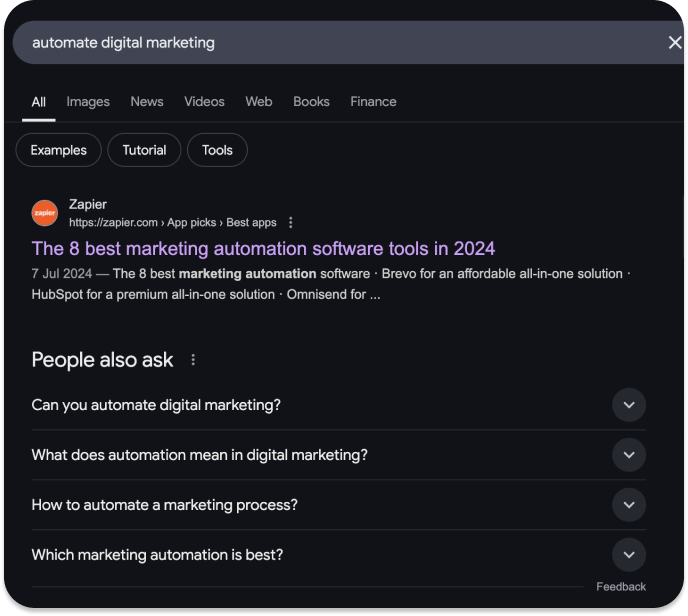
This top ranking on the search engine results page (SERP) means Zapier enjoys more impressions, clicks, and customers compared to competitors in the industry.
Understandably, this is a goal for every type of website. Whether your site sells products or publishes content, more organic search traffic means more opportunities for on-page ad placements or customer conversions.
How did Zapier improve their content to rank first?
While we can’t say exactly how Zapier earned the top spot, they likely used one or more of the three main types of SEO:
- On-page SEO
Optimizing webpages by improving content quality, keywords, meta descriptions, and subheadings. - Off-page SEO
Building visibility through external methods, like acquiring backlinks and sharing content on social media. - Technical SEO
Improving the structure, speed, and usability of your website to ensure a better user experience.
What is content marketing?
Content marketing is the creation and sharing of all material that doesn’t directly promote a website, but is used to stimulate interest and engagement with its product or services.
Let’s look at the Zapier example again: You might find a Zapier blog post through social media or a search engine that answers your question about automation. Over time, their helpful content might lead you to subscribe to their blog, and eventually, you could start using Zapier to solve your automation needs. That’s content marketing in action.
Is content marketing just blogs?
Content marketing goes beyond written articles—it includes:
- Blog posts
- Emails—including newsletters
- Demand generation assets like ebooks, white papers, and buyer guides
- Case studies
- Videos
- Podcasts
- Social media posts
- Any other valuable content that captures your audience’s interest
For example, at Monetag, we use a mix of all kinds of content – case studies, blog articles, and tutorials – to connect with our audience.
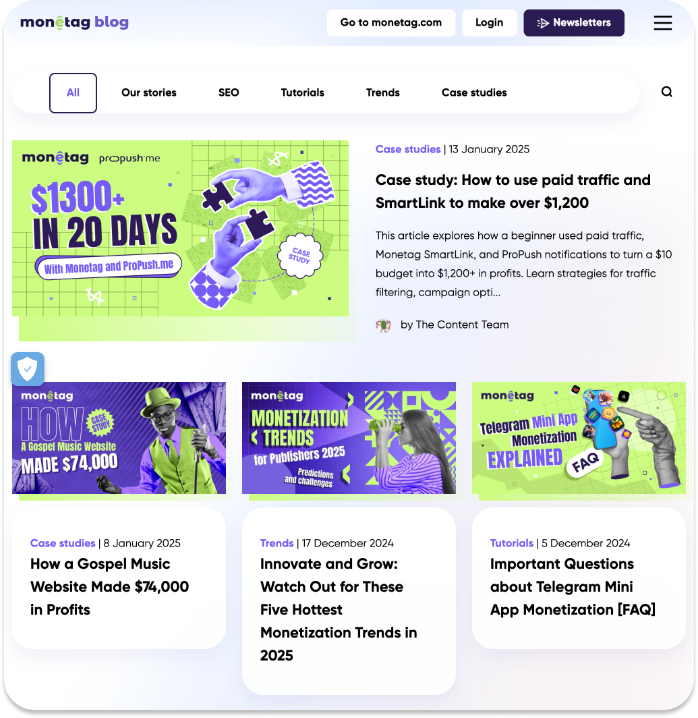
The key difference is that content marketing is less about direct promotion and more about engaging your audience at every stage of the marketing funnel.
Why is SEO content important?
Put simply, SEO content is important because it’s the only content that ranks on search engines. Companies that publish blogs get 55% more traffic and have 434% more pages indexed by search engines.
As mentioned earlier, it’s rare to rank on SERPs by publishing a blog post without at least thinking about SEO. SEO content is crafted to answer specific user queries and keep readers engaged, increasing the chances they’ll return to your site, and making the content “sticky”.
What’s the difference between SEO and content marketing?
Now that we’ve defined each term, you might wonder: what actually sets them apart? While both disciplines involve creating and publishing content, their approaches are different.
- SEOs focus on data, targeting keywords, and publishing optimized pages that rank on SERPs.
- Content marketers prioritize audience engagement, storytelling, and trend-focused content.
Here’s a quick comparison:

Despite these differences, both aim to increase brand visibility and reach target audiences across different stages of the user journey.
Why should you combine SEO and content marketing?
SEO and content marketing complement each other beautifully.
- Content marketing helps SEOs target keywords with engaging content, and earn backlinks through guest posting and partnerships.
- SEO adds structure and strategy, offering data and insights into search preferences and user behavior to guide content creation.
How do SEO and content marketing work together?
Once you understand how content marketing helps SEO, deciding they should work together becomes a no-brainer.
Typically, the two functions work together with the user journey in mind:
- SEO drives targeted traffic
SEO tackles the early stages of the user journey by targeting searchers who will care about what you do or sell. These users are primed to convert, and more likely to return to reliable pages that answer the questions they search. - Content marketing supports and builds trust
Content marketing supports SEO by publishing social media content and guest posting partnerships that generate backlinks. At the same time, content marketing continuously builds trust and loyalty with your audience through community building, trending content, and content further along the buyer journey that aims to convert: emails, case studies, whitepapers, videos, etc.
In short, SEO drives traffic, and content marketing guides it to the most relevant destinations.
How do you combine SEO and content marketing?
Now that you know how SEO and content marketing work together, it’s time to put the theory into practice!
To combine SEO and content marketing, start with a solid SEO content strategy. Your strategy will be the guiding light to keep your SEO and content marketing on track (more on this later).
Second to your strategy, you’ll need the right tools. For example, analytics and content creation tools––those include:
SEO tools
- Google Analytics
- Search Console
- Keyword research tools (Google Keyword Planner, Ahrefs, SEMRush)
Content marketing tools
- Research tool (Buzzsumo, social media platform explore pages)
- Design tools (Canva/Figma)
- AI writers (ChatGPT, Copy.ai, etc)
- Project management tools (Asana, Jira, Trello, etc).
What is an SEO content strategy?
As mentioned, your SEO content strategy is the guiding light for your SEO and content marketing work. It aligns content with your audience’s preferences and searches while growing website traffic.
How do you create an SEO content strategy?
Creating an SEO content strategy starts with research. On a high level, this means that you’ll need to start by researching the audience you want to reach, the keywords they search for, and ideate the kinds of content that they will want to see.
For example, let’s look at Anime News Network and Adventure Travel Hub. Both are blogs, but they serve entirely different audiences. Anime News Network focuses on anime fans, while Adventure Travel Hub targets travelers. Each blog tailors its content, design, and user experience to meet the needs of its audience, prioritizing specific interests over general topics.

Not sure where to start? Follow these 9 simple steps to create a winning SEO content strategy:
9 steps to create a winning SEO content strategy
1. Pick your niche or industry
As shown in the examples from Anime News Network and Adventure Travel Hub, it’s better to narrow down and be specific about the content you publish. Identifying your target industry or niche will reduce the possibility of targeting keywords that are irrelevant to you.
For example, a website about anime alone is broad: keywords could span from anime apparel to anime videos. Ranking for a broad range of keywords is difficult because you’re targeting multiple audiences with different search intent.
For example, a website about anime alone is broad: keywords could span from anime apparel to anime videos. Ranking for a broad range of keywords is difficult because you’re targeting multiple audiences with different search intent.
Instead, niching down to something like anime news means you can focus solely on keywords related to anime news.
2. Know your audience and their pain points
“Pain points” is a common term, but in SEO and content marketing, it simply means understanding who your audience is, what they’re searching for, and why.
For example, if I’m an anime fan searching for “anime releases in 2026,” I’m most likely looking for a list of shows set to premiere that year. If your content doesn’t provide this information and instead focuses on unrelated topics like anime apparel, it can frustrate users and create a negative experience.
To identify your audience and their pain points, review your existing site visitors, analyze competitor content, and create buyer personas based on demographic data in tools like Google Analytics.
3. Optimize your website
Your website’s content and design should reflect your audience’s interests. Anime News Network, for example, highlights the latest articles and trending content prominently on its homepage. In contrast, Adventure Travel Hub segments its content into helpful sections to aid visitors in planning their next trip.
The takeaway: Meet your audience’s expectations with a website design that matches their needs. This not only improves the user experience but also helps improve SEO rankings.
4. Conduct keyword research and group under relevant topics
Free tools like Google Search Console and Google Keyword Planner provide valuable insights into what your audience is searching for.
Look for related keywords such as “anime releases 2026” and “best new anime 2026,” which can be grouped into a topic like “New anime.” Grouping keywords helps you plan your content more effectively so you can cover topics that interest your audience.
5. Develop content ideas
This is where you can get creative. Use the topics and keywords you’ve identified to brainstorm content ideas that will engage your audience. These could be blog posts, videos, or even interactive content like quizzes or infographics. Make sure your ideas resonate with your target audience and align with your overall goals.
6. Audit existing content
Review your existing content to spot areas for improvement. Look for low-word-count articles, outdated information, or pages with slow load times—these are often quick wins.
Regular content audits help you understand what resonates most with your audience and identify which topics or formats aren’t worth pursuing. Focus your time and resources on content that delivers the best ROI.
7. Define KPIs
KPIs will help you measure the success of your strategy. Choose metrics that align with your goals. For example, if you want to increase brand awareness, track organic traffic and social mentions. If your focus is conversions, measure site visitors and conversion rates.
8. Measure success
Consistently monitor your KPIs and analytics to see how well your strategy is performing. This will help you identify strengths, weaknesses, and opportunities to refine your approach further.
9. Keep optimizing!
SEO and content marketing are ongoing processes. Regularly update your content, revisit your keyword research, and make adjustments based on performance data. Continuous optimization ensures long-term success and keeps your strategy effective.
The time to combine SEO and content marketing is now!
“Nothing worth having comes easy” may be an old saying, but it holds true for SEO. With time, patience, and persistence, SEO and content marketing work together beautifully. In the end, your audience will benefit from valuable, engaging content, and your website will enjoy the rewards of increased traffic and higher profits.



